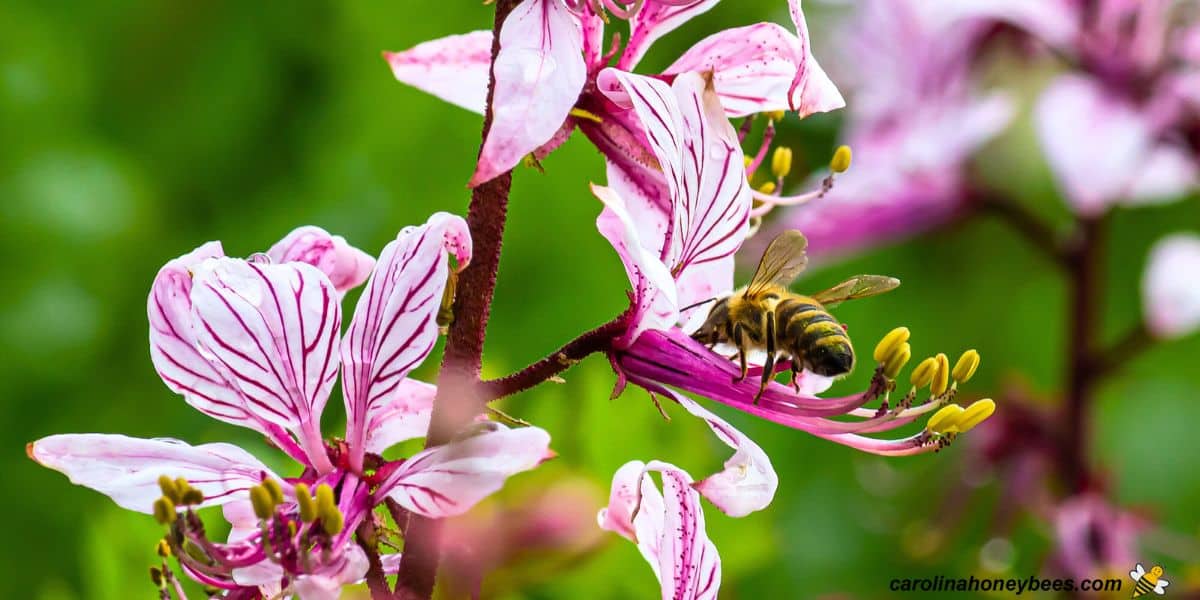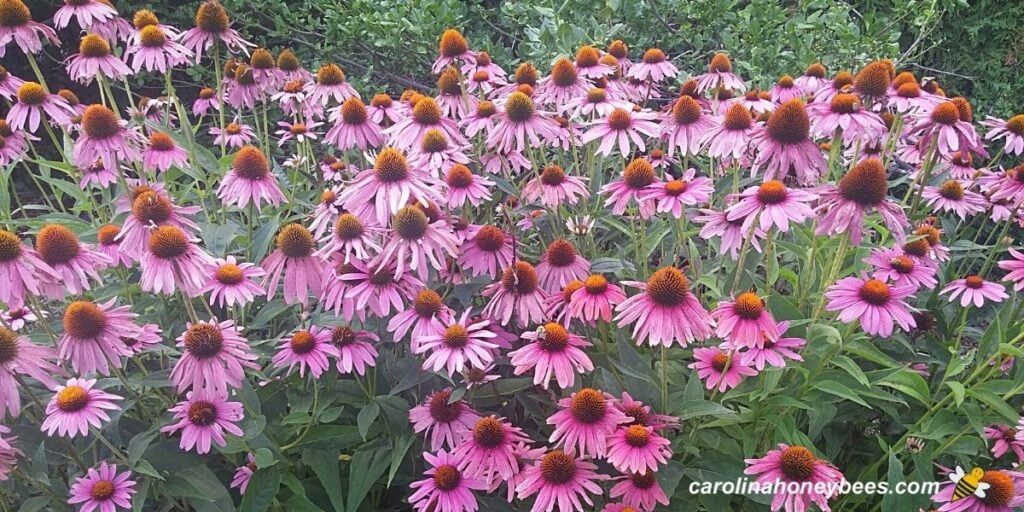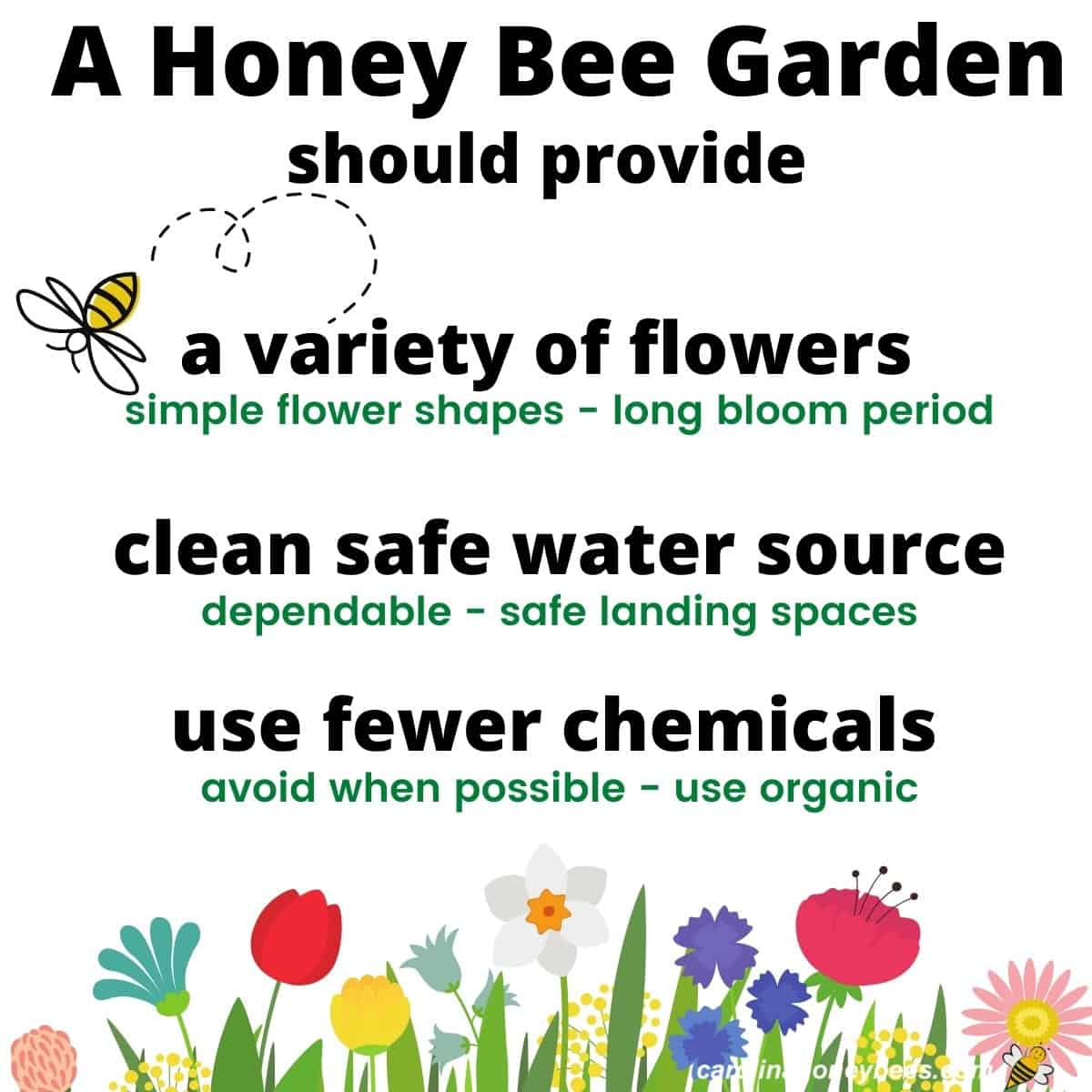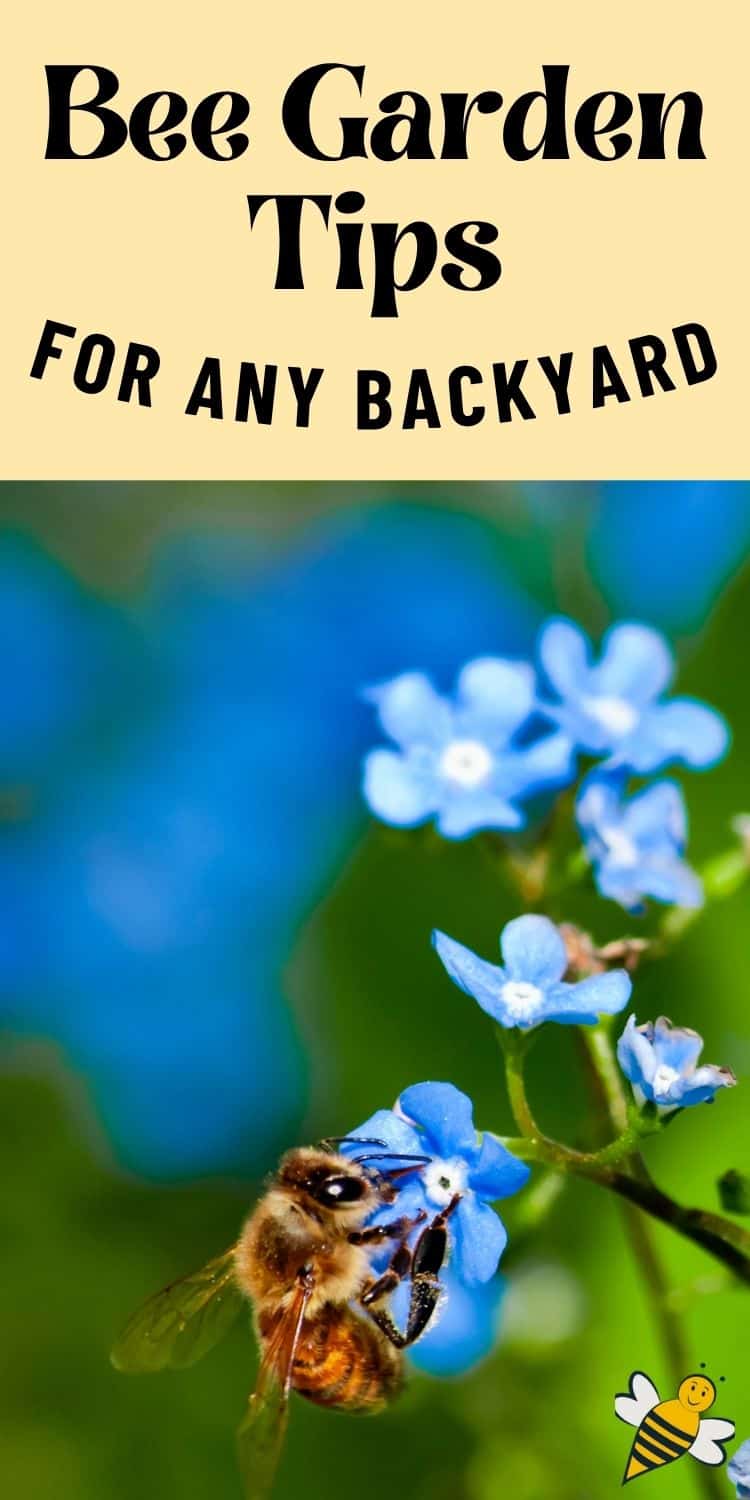Planning the Perfect Garden for Bees
Creating a honey bee garden is one of the more rewarding ways to support pollinators. Whether you have a large backyard, a small plot or even a few pots on the patio, a well-planned bee garden can provide, food, water and shelter. In this post, you will learn important tips about polliator garden design and the best way to create your own bee oasis.

As a beekeeper and avid gardener, I have created many bee friendly garden spots over the years. It adds beauty to my yard and benefits important honey bees and all pollinators.
Why Create a Honey Bee Garden?
Global bee populations decline each year due to habitat loss, exposure to pesticides and various problems.
Honey bees and bumble bees (similar in ways – yet different too) are important pollinators that need a variety of food sources to thrive.
Native bees, butterflies and other insects will also benefit. Your pollinator garden contributes to a healthy ecosystem.
If you have a vegetable garden or orchard, having more bee visitors will enhance pollination and increase the yield of your crops.
If you give some serious thought to the design and layout of your bee garden, you and the bees will experience maximum benefits.
Choosing the Best Plants
Choosing the best plants is critical for any gardening success. Not every flower provides food for bees – some plants depend on wind pollination.
When deciding which are the best flowers for bees to grow, consider your growing climate. Sickly, struggling plants will not appeal to the bees.
Also, some flowering plants can be toxic to honey bees. While not a huge problem, I do try to avoid those in my honey bee gardens.
Think beyond the bloom when designing a bee garden. Use these guidelines to help you choose the best plants for your climate and space.
Nectar & Pollen Sources
Honey bees make honey from plant nectar gathered from millions of blooming flowers. They also need pollen that serves as a protein source for developing young.
An interesting tidbit – nectar and pollen composition varies among different types of plants! A wide variety of blooms promotes better bee nutrition.
Some types of bee plants produce both but others only produce nectar or pollen. Have a mix of all in your bee garden design.
This is one reason that colonies involved in migratory beekeeping often suffer poor health. When used to pollinate large fields of one type of crop – their nutritional needs are not met.
Plan for Continuous Bloom
Strive to have something blooming in your honey bee garden all season long. As one stops flowering, another is just getting started.
In the warm months of Spring and Summer, nectar-rich flowers help bee colonies grow. Even the flowers of Fall help bees -allowing colonies to store food for Winter.
There are even a few winter plants that help bees in regions where the temperatures are mild. Bees will fly from the hive on warm afternoons.

Honey Bee Garden Building Blocks: Flowers, Herbs & Trees
A successful bee garden includes more than just pretty flowers. It includes a mix of plant types that help meet the needs of beneficial insects all year.
Let’s look at the types of plants you should consider and you can choose those that do well in your region.
- Bee Friendly Perennials are often the centerpiece of a planting-they appear year after year
- Don’t forget to consider native plants and the value of wildflowers for bees – both provide food
- Flowering shrubs that attract bees provide food and nesting sites for other insects and birds
- If space allows, there are many trees that benefit bees providing seasonal nutrition
- Enjoy some double-duty plants – flowering herbs feed honey bees and you too
What Every Bee Garden Needs

Garden Design Tips
Creating a honey bee garden is about more than just planting flowers – that is if you want the bees to get maximum benefit. Plant placement, diversity and bee safety all play a role.
Consider Your Space
Don’t let the idea that you don’t have enough room for acres of sunflowers for bees to visit – keep you from doing something. Even a few bee friendly container plants on the patio is a great start.
Consider interesting varieties. I grow lotus tubers planted in large containers . The bees love them.
If you have a trouble spot in your yard, a space that tends to hold water after a rain – consider planting a rain garden there. Reduce erosion and provide some bee food too!
Group Plants
One effective pollinator garden practice is grouping flowers of the same species for maximum attractiveness.
Rather than having 4 plants of the same type scattered throughout the garden, plant them close together in one section.
This allows bees to collect the resources needed in the most efficient way.
Provide Water
Providing a clean safe water source for bees is very important. Water is used for several purposes in the hive and it is not stored but must be collected daily.
I love my water gardens but you can create a bee water source with anything as long as they have a safe place to drink.
Avoid Pesticide Use
Whenever possible, use organic gardening practices to control unwanted weeds and insects. Bee friendly weed killers are available.
Avoid chemical pesticides and if you must use them – do your research. A thorough understanding of how pesticides affect bees will help you make the best choice. Avoid using dusts – such as Sevin Dust near bees.
Maintaining a Thriving Bee Garden
Once your garden is established you should only need to do some seasonal maintenance. Some natural areas are desirable. Keep in mind that many weeds feed bees during certain times of the year.
Avoid plants that are invasive in your region, even if they do feed pollinators. It is too much work to keep them under control.
FAQs
Not usually, but wasps may visit some flowers or drink from a water source.
Group the same types of plants together to aid bees in efficient foraging.
Yes, bees that visit nectar or pollen rich flowers will stop by to pollinate your vegetable plants while they are nearby.
Final Thoughts
Developing and decorating a honey bee garden can involve the whole family. It is a great learning experience for children and helps them develop a deeper appreciation for insects.
Learning how to make seed balls is a fun activity for all ages. A method of gorilla gardening – making seed bombs with air dry clay is a great way to spread patches of wildflowers around in a natural setting.
More Resources:


